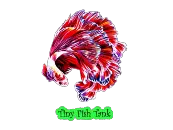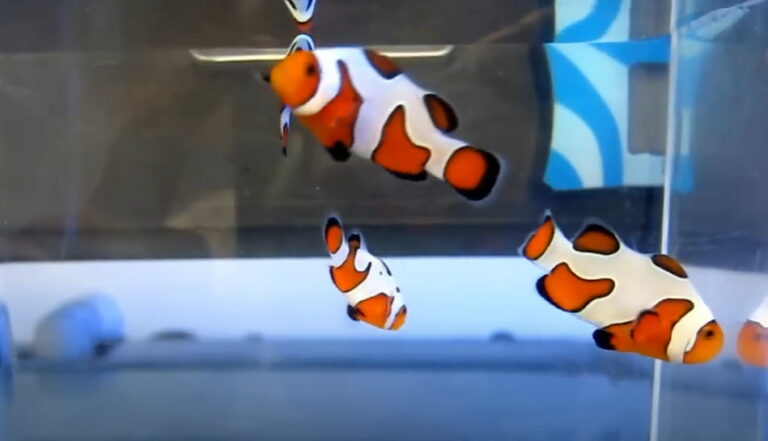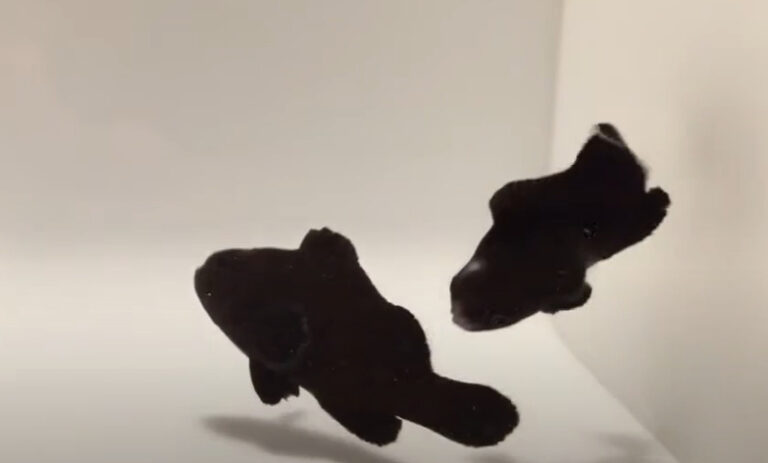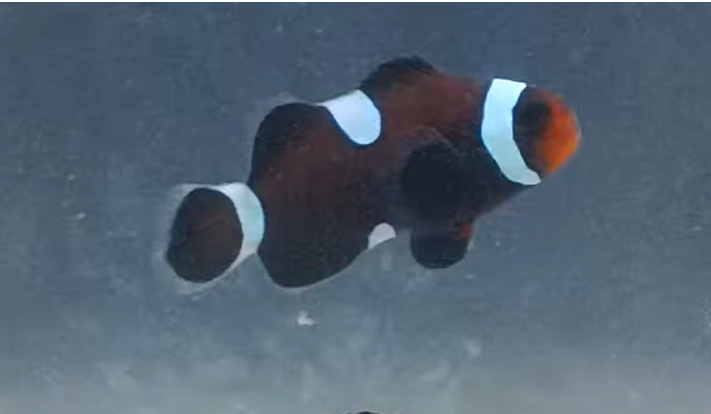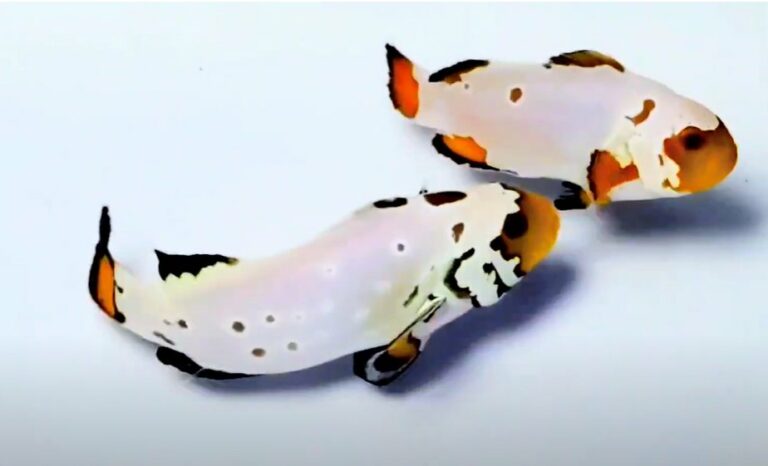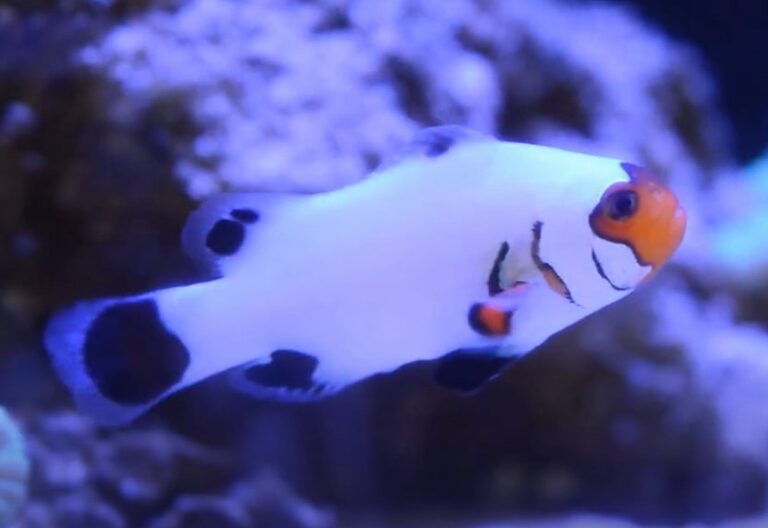Nearly Naked Clownfish Lifespan, Tank Size And Diet
Introduction to Nearly Naked Clownfish
The Nearly Naked Clownfish, scientifically known as “Amphiprion ocellaris“, is a captivating species within the clownfish family, distinguished by its unique coloration and ease of care. This species is a variant of the common clownfish but is noted for its distinct lack of the typical white banding or its minimal presence, which gives it a more “naked” appearance compared to its vibrantly striped relatives. Popular among aquarists for their hardy nature and striking looks, Nearly Naked Clownfish are a great choice for both novice and experienced fish keepers.
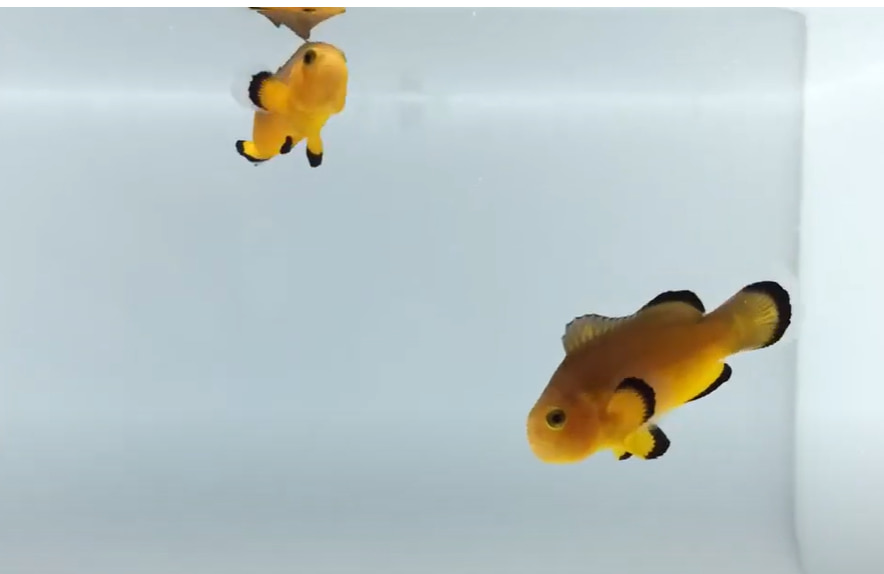
Table of Contents
- Introduction to Nearly Naked Clownfish
- Appearance
- Average Size
- Lifespan
- Habitat and Natural Environment
- Tank Size
- Water Parameters
- Setting Up the Aquarium for Nearly Naked Clownfish
- Care and Maintenance
- Food & Diet
- Temperament & Behavior
- Tank Mates
- Cleaning and Maintenance
Appearance
Nearly Naked Clownfish are celebrated for their smooth, orange coloration, which can range from a bright, almost neon orange to a deeper, more subdued hue. Unlike other clownfish varieties, they may have very minimal white banding, often reduced to small patches or absent altogether, making them appear almost bare. This lack of traditional striping makes them stand out in a tank, providing a unique visual appeal. Their skin has a sleek, almost glossy finish that catches the light beautifully, making them a stunning centerpiece in any marine aquarium.
Average Size
An adult Nearly Naked Clownfish typically reaches a size of about 3 to 4 inches (7.5 to 10 cm). They are relatively small fish, which makes them suitable for a variety of aquarium sizes. Despite their compact size, they possess a robust and hardy constitution, making them a resilient choice for home aquariums.
Lifespan
In captivity, with proper care, Nearly Naked Clownfish can live up to 10 years, and sometimes even longer. Their lifespan in the wild is typically shorter due to predation and environmental challenges. Ensuring a clean, stable environment and a balanced diet can significantly contribute to their longevity in an aquarium setting.
Habitat and Natural Environment
Nearly Naked Clownfish are native to the warm, shallow waters of the Indo-Pacific region, particularly around coral reefs. They thrive in symbiotic relationships with sea anemones, which provide them with protection and a habitat. In the wild, these clownfish are often found in lagoons and reef flats where they navigate the complex structures of coral reefs and anemones, avoiding predators and seeking food.
Tank Size
For Nearly Naked Clownfish, a tank size of at least 20 gallons (75 liters) is recommended. This provides ample space for swimming and establishing territory, especially if you plan to keep more than one clownfish or additional species. A larger tank can help in maintaining stable water conditions and reducing stress on the fish.
Water Parameters
Maintaining optimal water parameters is crucial for the health of Nearly Naked Clownfish. Ideal conditions include:
- Temperature: 74-79°F (23-26°C)
- pH: 8.1-8.4
- Salinity: 1.020-1.025 specific gravity
- Ammonia, Nitrite: 0 ppm
- Nitrate: <20 ppm
Regular monitoring and maintenance of these parameters help in preventing diseases and ensuring the well-being of the fish.
Setting Up the Aquarium for Nearly Naked Clownfish
Creating a suitable environment for Nearly Naked Clownfish involves replicating their natural habitat as closely as possible. This includes providing appropriate water conditions, lighting, and space.
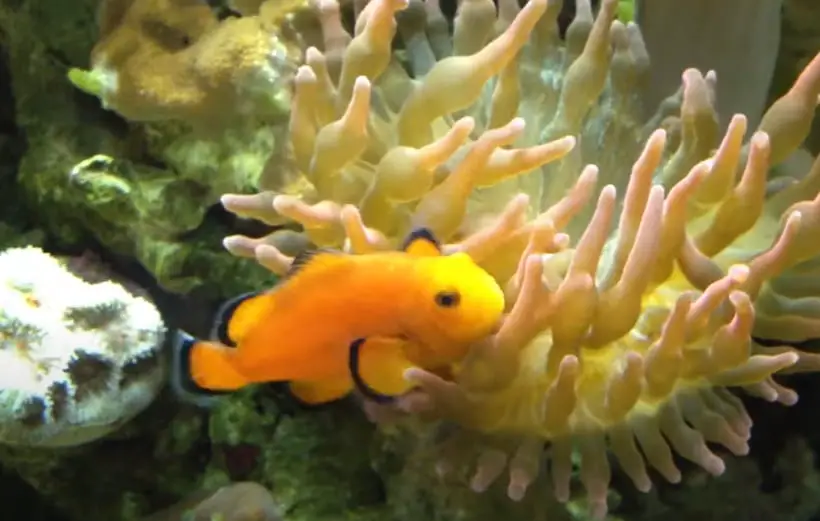
Aquarium Decor and Hiding Spots
Decorating the tank with live rock and coral can create a more natural and engaging environment for Nearly Naked Clownfish. These structures offer hiding spots and help in establishing territories. Incorporating anemones can also enhance the tank, as clownfish naturally form symbiotic relationships with them. However, ensure the anemones are suitable for the aquarium size and water conditions.
Filtration and Water Flow
A good filtration system is essential to maintain water quality. A combination of mechanical, biological, and chemical filtration can help keep the tank clean and free of harmful substances. Moderate water flow is preferred, simulating the natural conditions of their reef habitat. Using powerheads and wave makers can help achieve this.
Care and Maintenance
Proper care and regular maintenance are key to keeping Nearly Naked Clownfish healthy and thriving. This includes monitoring water quality, providing a balanced diet, and preventing diseases.
Common Possible Diseases
Nearly Naked Clownfish are susceptible to common marine diseases such as ich, marine velvet, and bacterial infections. Early signs of illness include changes in behavior, loss of appetite, and visible spots or lesions on the body. Quarantine new fish before adding them to the main tank and maintain good water quality to minimize disease risks.
Food & Diet
Nearly Naked Clownfish are omnivorous and have a varied diet. In captivity, they thrive on a mix of:
- High-quality flake food
- Pellets designed for marine fish
- Frozen or live foods such as brine shrimp, mysis shrimp, and finely chopped seafood
Feeding small amounts several times a day can help maintain their health and vitality. Supplementing their diet with vitamin-enriched foods can also enhance their coloration and immune system.
Temperament & Behavior
Nearly Naked Clownfish are generally peaceful and exhibit interesting social behaviors. They can form pairs or small groups, with a dominant female leading the group. These clownfish are known for their unique “waddle” swim and their symbiotic relationship with anemones. While they are not overly aggressive, they can be territorial, especially during breeding.
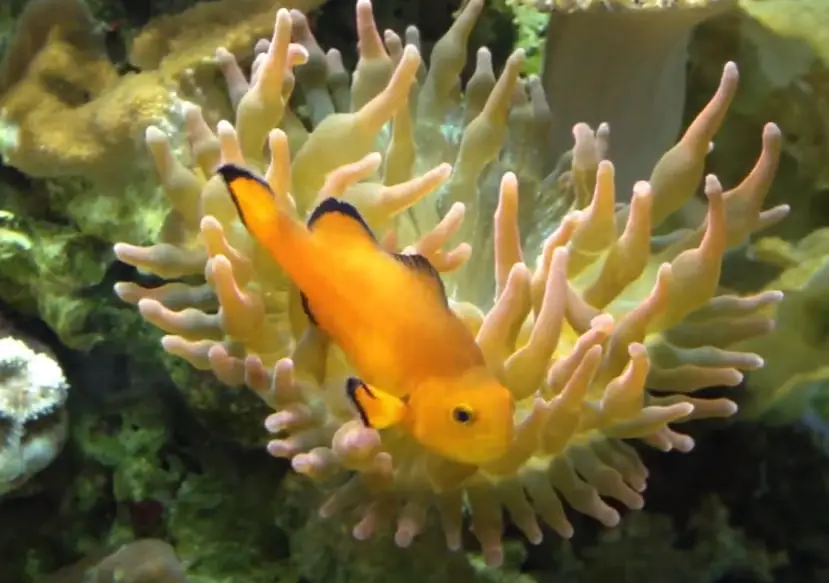
Tank Mates
When selecting tank mates for Nearly Naked Clownfish, consider species that are peaceful and compatible with their size and temperament. Suitable tank mates include:
- Longfin Mocha Clownfish or Other clown fishes (preferably of different species to avoid territorial disputes)
- Gobies
- Blennies
- Small wrasses
- Reef-safe invertebrates like snails and shrimp
Avoid housing them with aggressive or significantly larger fish that might bully or outcompete them for food.
Cleaning and Maintenance
Regular cleaning and maintenance are crucial for a healthy aquarium environment. This includes:
- Weekly water changes of about 10-20% to maintain water quality
- Cleaning the substrate to remove waste and uneaten food
- Inspecting and cleaning filtration systems regularly
- Monitoring water parameters and adjusting as needed
Maintaining a consistent cleaning schedule helps in preventing the build-up of harmful substances and ensures a stable environment for Nearly Naked Clownfish.
By understanding the specific needs and behaviors of Nearly Naked Clownfish, aquarists can create a thriving and visually stunning marine aquarium. These fascinating fish, with their unique appearance and resilient nature, can bring both beauty and joy to any home aquarium setup.
